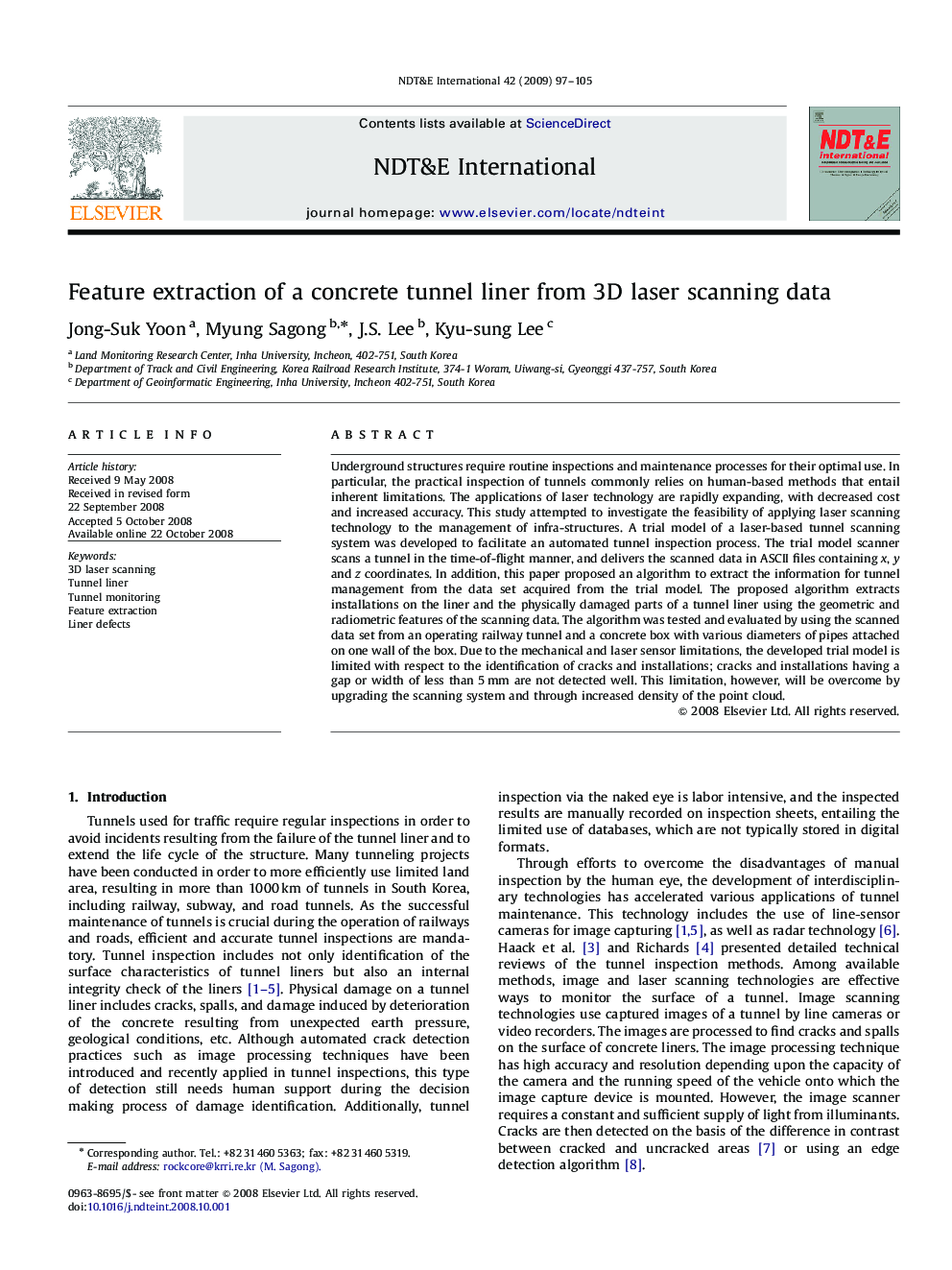| کد مقاله | کد نشریه | سال انتشار | مقاله انگلیسی | نسخه تمام متن |
|---|---|---|---|---|
| 295714 | 511570 | 2009 | 9 صفحه PDF | دانلود رایگان |

Underground structures require routine inspections and maintenance processes for their optimal use. In particular, the practical inspection of tunnels commonly relies on human-based methods that entail inherent limitations. The applications of laser technology are rapidly expanding, with decreased cost and increased accuracy. This study attempted to investigate the feasibility of applying laser scanning technology to the management of infra-structures. A trial model of a laser-based tunnel scanning system was developed to facilitate an automated tunnel inspection process. The trial model scanner scans a tunnel in the time-of-flight manner, and delivers the scanned data in ASCII files containing x, y and z coordinates. In addition, this paper proposed an algorithm to extract the information for tunnel management from the data set acquired from the trial model. The proposed algorithm extracts installations on the liner and the physically damaged parts of a tunnel liner using the geometric and radiometric features of the scanning data. The algorithm was tested and evaluated by using the scanned data set from an operating railway tunnel and a concrete box with various diameters of pipes attached on one wall of the box. Due to the mechanical and laser sensor limitations, the developed trial model is limited with respect to the identification of cracks and installations; cracks and installations having a gap or width of less than 5 mm are not detected well. This limitation, however, will be overcome by upgrading the scanning system and through increased density of the point cloud.
Journal: NDT & E International - Volume 42, Issue 2, March 2009, Pages 97–105